
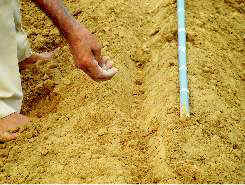
| Single Cross Hybrid |
Technology
for hybrid seed production |
Seed
Production Site
Seed production should be taken in well drained ,weed and diseases free soil and preferably the fields where preceding crop was not maize to minimize roguing and maintain the genetic purity.
Time
of Sowing
Appropriate time of showing is very important for better crop establishment .For most part of India ,first week of July during kharif and first week of November during rabi are the optimum time of showing to avoid flowering from heavy rains during kharif and low temperature should not coincide with flowering .Rains during flowering wash the pollen in kharif and low temperature during winter causes mortally and killing another .
Method
of sowing and layout
It is
desirable to plant the crop on ridges (Photo 6). Sowing should be done on the
southern side of the east-west ridges, which helps in good germination. Planting
should be done at proper spacing (Photo 7 & 8). Optimum row and plant
spacing should be kept at 60 and 20 cm, respectively. This spacing will ease the
movement in the field for roguing and removal of tassels. Proper spacing also
helps in improving the test weight. Identification labels/tags (Photo 9) should
be put on the male and female lines to distinguish between them.


Photo 6. Ridge and furrow Photo 7. Putting seed at proper spacing

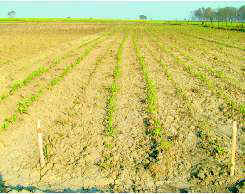
Photo 8. Covering seed with soil Photo 9. Identification mark in male rows
The seed rate depends on (a) seed size/test
weight of male and female seed, (b) plant type as in case of erect plant higher
seed rate is required to accommodate large number of plants per unit area than
in spreading plant types and (c) male: female ratio. In
general the optimum seed rate is 15 kg/ha for female and 10 kg/ha for
male with at least 80% germination.


Photo 10. Adding chemical in seed
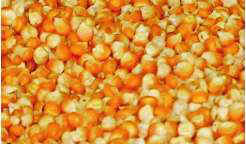
Photo
12. Drying treated seed in shade
·
Bavistin + Captan in 1:1 ratio@2g/kg seed for TLB, BLSB,
MLB etc.
·
Apran 35 SD@4g/kg seed for BSDM
·
Captan 2.5g/kg for Pythium Stalk Rot
·
Imidachlorpit@4g/kg or Fipronil @4ml/Kg seed for
termite and shoot fly.
Note:
TLB
: Turcicum leaf blight
BLSB
: Banded leaf and sheath blight
MLB
: Maydis leaf blight
BSDM
: Brown stripe downy mildew
Nutrient
management
In general, inbreds are slow growing and
weak in nature and have poor nutrient uptake efficiency. Therefore, inbreds
require high fertility as compare to hybrids. It is desirable to apply FYM@15t/ha
15 days prior to seeding. The fertilizer nutrients required for inbreds are N
180-200 kg, P205 80 kg, K20 80 kg and ZnS04
25
kg/ha.
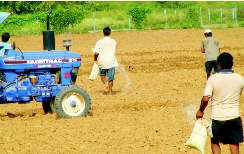
Photo 13. Basal application of fertilizer
Full dose
of phosphorus, potash and zinc and 10% N should be applied as basal (Photo 13).
The remaining dose of nitrogen should be applied in
four splits as per details given below to avoid losses and meet the
requirement throughout the crop cycle:
1.
20%
N at41eafstage
2.
30%
N at 8 leaf stage
3.
30%
N at flowering stage
4.
10%
N at grain filling
Water
Management

Photo 14. Irrigation in furrows
First irrigation should be applied very carefully.
Water should not overflow on the ridges (Photo 14). The irrigation should be
applied in furrows upto 2/3rd height of the ridges. Irrigation should be given
as and when required by the crop depending upon the rains and moisture holding
capacity of the soil (Photo 15). Light and frequent irrigations are desirable
for inbred parents. Young seedlings, knee high stage, flowering, grain filling
and 10 days after grain filling are the most sensitive stages for water stress
for inbreds and irrigation should be ensured at these stages.

Photo 15. Irrigating crop
Weed
management
Weeds are the serious problem in maize,
particularly in wet (monsoon) season that competes with maize for nutrient and
causes yield loss up to 35%. Therefore, timely weed management is needed for
achieving higher yield. Atrazine being a selective and broad spectrum
herbicide in maize checks the emergence of both broad leaves and most of the
grasses. Pre-emergence application of atrazine @ of 1.0-1.5 kg a.i/ha in 600
litre water is effective way for control of weeds (Photo 16). While spraying,
the person who is doing spray should move backward so that the 'atrazine film on
the soil surface may not be disturbed. Preferably, three nozzle booms may be
used for proper ground coverage and saving time. One to two hoeings are
recommended for aeration and uprooting of the remaining weeds (Photo 17). While
doing hoeing, again the person should move backward to avoid compaction and to
ensure better aeration.
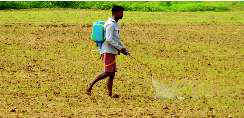

Photo 16. Spraying atrazin
Photo 17. Manual weeding
Insect
pest management
Stem borer is a serious problem in maize.
It can be controlled by 1-2 spray of Carboryl or Endosulfan after 10 days and 20
days of germination. Spraying should be done in the central whorl of plant
(Photo 18).
1st Spray : 500 gm Carboryl or 625ml Endosulfan (35EC) in 500 litre
water.
IInd Spray: 750 gm Carboryl or 900 ml Endosulfan (35EC) in 700-800 litre
water, if required.

Photo
18. Spraying Endosulfan
Disease Management
Several. diseases occur during different
seasons in various parts of the country that leads to loss to yield if not
managed properly in time. Estimated losses due to major diseases of maize in
India is 13.2% of which foliar diseases (5%), stalk rots, root rots, ear rots
(5%) cause major yield losses. The major diseases and their management practices
are described as below:
Turcicum
leaf blight (Photo 19) : Spray of Zineb/Maneb @2.5-4.0 gm/litre of water (2-4 appl
ications) at 8-1 0 days interval.
Maydis
leaf blight (Photo 20) : Spray of Dithane M-45/Zineb @2gm/liter of water (2-4 applications) at 8-1 0 days interval starts from first appearance of
disease.
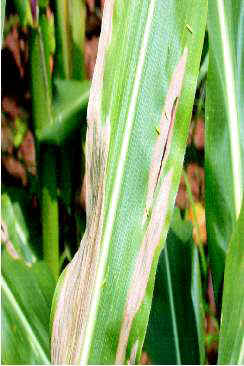
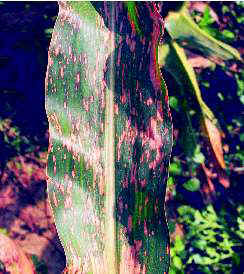
Photo 19. Turcicum leaf blight Photo 20. Maydis leaf blight
Polysora Rust (Photo 21) : Three sprays of Dithane M-45 @2-2.5gm/litre
of water beginning from first appearance of symptoms at 15 days interval.
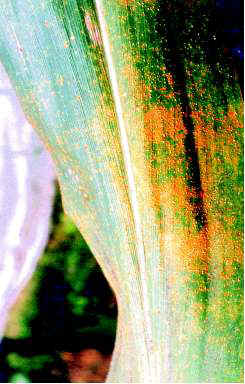
Photo 21. Polysora
rust
Banded leaf and sheath blight (BLSB) (Photo
22) : Striping of 2 lower leaves along with leaf sheath, Seed treatment of peat
based formulation of Pseudomonas fluorescence @16g/kg seed or as soil
application @7g/litre of water (soil drenching), or foilar spray of Sheethmar (Validamycin)
@2.7ml/litre of water.
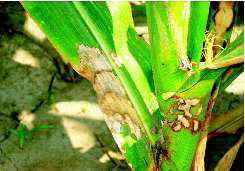
Photo 22. Banded leaf and sheath blight
Sorghum Downy
mildews (Photo
23) : Seed treatment with systemic fungicides Apron 35 W.P. @2.5g/kg seed.
Roguing and destroying infected plants as they appear is the field.

Photo 23. Sorghum downy
mildew
Removal
of off-type plants and thinning
i)
At
early stage i.e. after 12-15 days of sowing, off-type plants and excess plants
should be removed and proper plant to plant distance of 20-25 cm should be
maintained to provide an equal opportunity to each plant to grow,
iii)
At flowering i.e. before anthesis.
Dissimilar plants should be removed (Photo
24,25,26 & 27) from the male and female lines to maintain the genetic purity
of seed. Dissimilar tassel bearing male plant should also be removed.

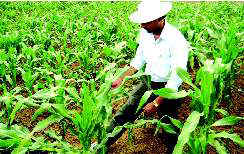
Photo 24.
Identifying dissimilar plant

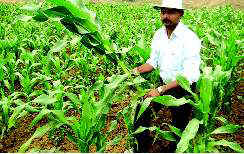
Earthing
up
One day prior to earthing up, third split
of nitrogen should be applied followed by hoeing. On the next day earthing up
operation should be completed with movement of the person in the backward
direction. This operation should be done before tasseling stage to save the crop
from lodging.
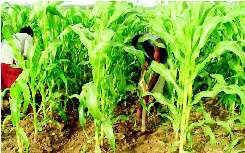
Photo 28.
Earthing up
Detasseling
Detasseling in female should be done before
anthesis. It should
be practiced row-wise. One person should follow to monitor the each row to check
that no part of the tassel is left inside. The process of detasseling should
continue for 8-10 days. While detasseling, leaf should not be removed which will
other wise reduce the photosynthesis. It has been observed that the removal of 1
to 3 leaves along with tassel reduces 5-15% yield. The removed tassel should not
be thrown in the field but fed to the cattle as it is nutritive fodder.
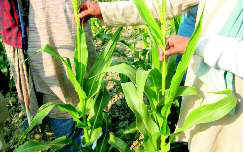
Male parent should be harvested first than
the female and should be kept separately. Optimum moisture content in grain at
harvesting should be around 20%. The harvested cobs should be spread evenly
instead of making heap.
·
At the time of sowing purpose: to
monitor the land, isolation distance, planting ratio of male: female, proper
sowing time, seed treatment etc.

Photo 31. Inspection at vegetative stages
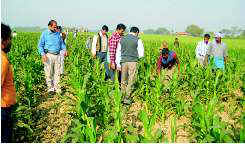
Photo 31. Inspection at pre-flowering stages
· During post-flowering and pre-harvest stage purpose: to remove the late and diseased plants
·
Harvesting time purpose: to
see the proper time of harvesting